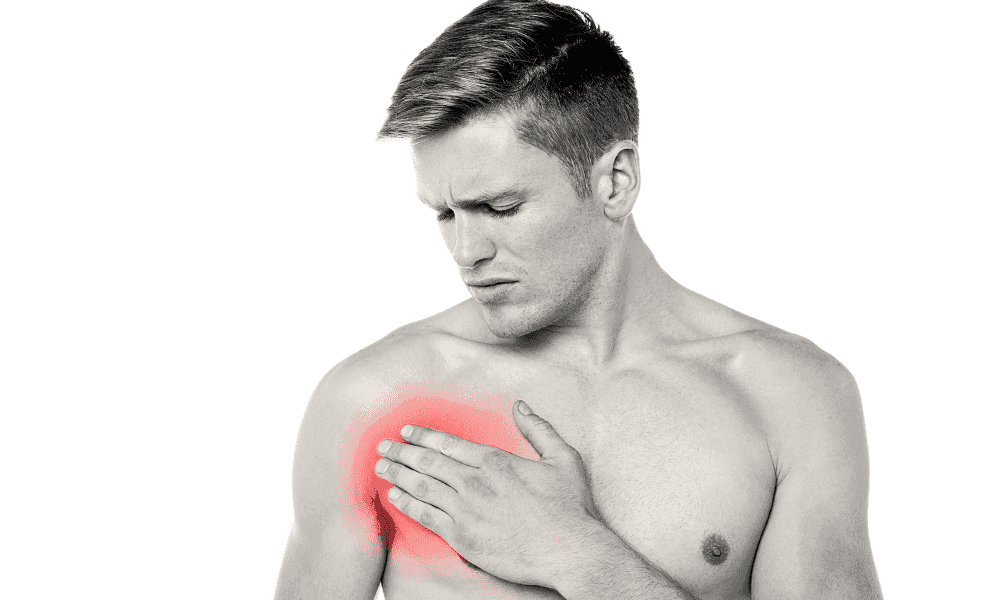Introduction
If you’re experiencing chest discomfort or pain, you may be considering various methods to alleviate the symptoms. One popular option is the use of lidocaine patches. Lidocaine is a local anesthetic that can provide temporary relief from pain and discomfort when applied to the skin. However, before you reach for a lidocaine patch and apply it to your chest, it’s essential to understand the potential risks and benefits. In this article, we’ll explore the question, “Can you put a lidocaine patch on your chest?” and provide you with valuable insights and guidelines for safe usage.
Can You Put a Lidocaine Patch on Your Chest?
The answer to whether you can put a lidocaine patch on your chest is yes, but it’s crucial to follow proper guidelines and consult with a healthcare professional before doing so. Lidocaine patches are commonly used to relieve localized pain and discomfort, including muscle aches, joint pain, and postoperative pain. While the chest is not an uncommon area to apply a lidocaine patch, there are specific considerations to keep in mind.
Understanding Lidocaine Patches
Before we delve further into the topic, let’s take a moment to understand what prescription lidocaine patches are and how they work. Lidocaine patches are adhesive patches that contain the active ingredient lidocaine, a local anesthetic. These patches adhere to the skin and slowly release lidocaine, providing a numbing effect and reducing pain and discomfort in the applied area.
Guidelines for Applying Lidocaine Patches on the Chest
When using a lidocaine patch on your chest, it’s crucial to follow these guidelines to ensure safety and maximize the potential benefits:
- Clean and dry the skin: Before applying the patch, make sure the skin on your chest is clean and dry. Gently wash the area with mild soap and water and pat it dry.
- Avoid broken or irritated skin: Do not apply a lidocaine patch on broken, damaged, or irritated skin. This includes cuts, wounds, rashes, or any other skin condition that may increase the risk of adverse reactions.
- Choose the appropriate patch size: Lidocaine patches come in various sizes. Select a patch size that adequately covers the area of discomfort on your chest without extending beyond the intended region.
- Apply the patch to intact skin: Carefully remove the patch from its packaging and peel off the protective liner. Apply the adhesive side directly onto the intact skin of your chest, ensuring it adheres firmly.
- Do not apply multiple patches at once: Stick to the recommended dosage and avoid applying multiple patches simultaneously. Using excessive lidocaine can lead to adverse effects.
- Follow the recommended duration: Read the instructions provided with the lidocaine patch and adhere to the recommended duration of application. Leaving the patch on for too long or applying it for shorter periods than advised may affect its effectiveness.
- Consult a healthcare professional: If you have any underlying medical conditions, are taking medications, or are unsure about using a lidocaine patch on your chest, consult a healthcare professional for personalized guidance and advice.
FAQs about Using Lidocaine Patches on the Chest
- Can I use a lidocaine patch on my chest for heart-related chest pain?
It is essential to differentiate between different types of chest pain. If you experience chest pain that may be related to your heart, it is crucial to seek immediate medical attention. Lidocaine patches are not intended for use in managing heart-related chest pain. Consult a healthcare professional for a proper evaluation and appropriate treatment options.
- How long can I leave a lidocaine patch on my chest?
The recommended duration of application may vary depending on the specific brand and concentration of lidocaine in the patch. Generally, it is advisable to follow the instructions provided with the patch. Leaving a lidocaine patch on for more extended periods than recommended can increase the risk of adverse reactions.
- Can I shower or swim with a lidocaine patch on my chest?
Lidocaine patches are designed to be water-resistant, but excessive exposure to water, such as prolonged swimming or bathing, may affect their adhesion and effectiveness. It is best to avoid extended water exposure while wearing a lidocaine patch. However, if the patch accidentally gets wet, gently pat it dry without rubbing.
- Are lidocaine patches safe for everyone?
Lidocaine patches may not be suitable for everyone. Certain individuals, such as those with allergies to local anesthetics or those taking specific medications, may be at higher risk of adverse reactions. Additionally, pregnant or breastfeeding individuals should consult a healthcare professional before using lidocaine patches. It is always best to seek medical advice to ensure the safe and appropriate use of lidocaine patches.
- Can I cut a lidocaine patch to fit a specific area on my chest?
Cutting a lidocaine patch to fit a specific area on your chest is not recommended. Lidocaine patches are designed to provide controlled and consistent release of the medication. Altering the patch’s size or structure may affect its efficacy and increase the risk of adverse effects. It is advisable to use a patch size that adequately covers the intended area without modification.
- Can I use a lidocaine patch on my chest if I have sensitive skin?
If you have sensitive skin, it is essential to exercise caution when using a lidocaine patch. Patch application on sensitive skin may cause irritation or allergic reactions in some individuals. Before applying a lidocaine patch to your chest, perform a patch test on a small area of your skin and monitor it for any adverse reactions. If you experience redness, itching, or other discomfort, discontinue use and consult a healthcare professional.
Conclusion
In conclusion, when used correctly and following the recommended guidelines, you can put a lidocaine patch on your chest for temporary relief from localized pain and discomfort. However, it is crucial to consult a healthcare professional and adhere to the instructions provided with the lidocaine patch. Remember, if you experience severe or persistent chest pain, it is vital to seek immediate medical attention, as this may indicate a more serious underlying condition.
By understanding the proper usage and potential risks associated with lidocaine patches, you can make informed decisions regarding your chest discomfort management. Always prioritize your safety and well-being by seeking professional medical advice when needed.
Here at Performance Pain and Sports Medicine we endorse the use of lidocaine patches for pain relief, and soon we will have pain patches available online (so bookmark this and check back in a week or two). You can see Dr. Suzanne Manzi in person at the Houston or League City locations in Texas, and Dr. Matt Wiederholz is available at our Houston Texas and Lawrenceville New Jersey locations. Contact us now to learn more.

















